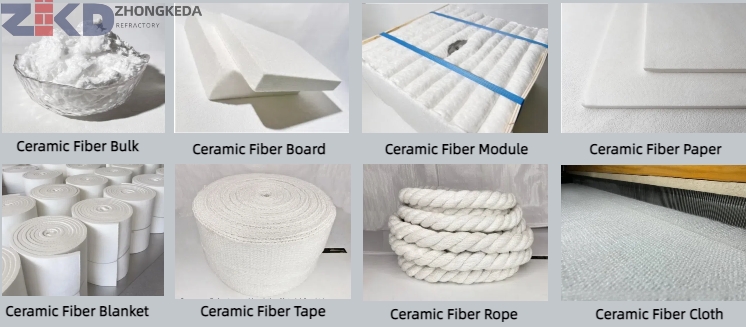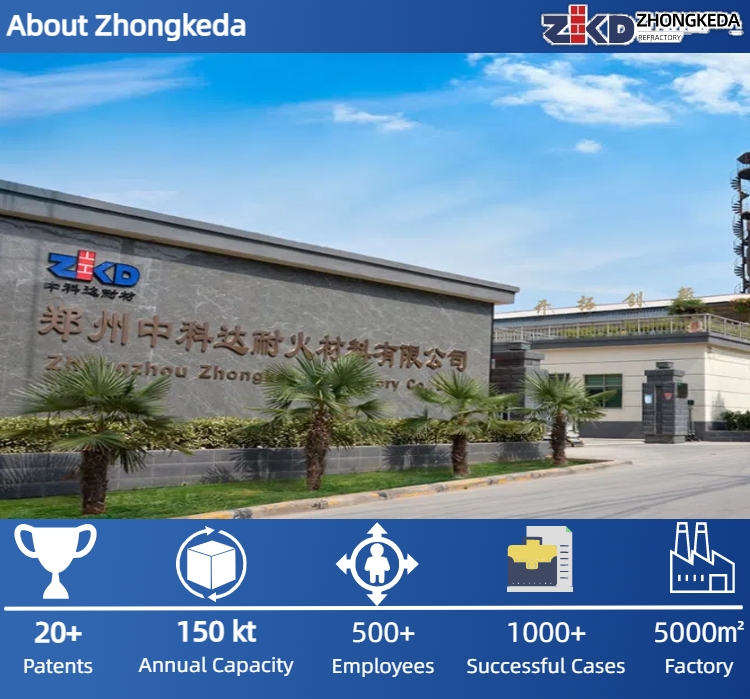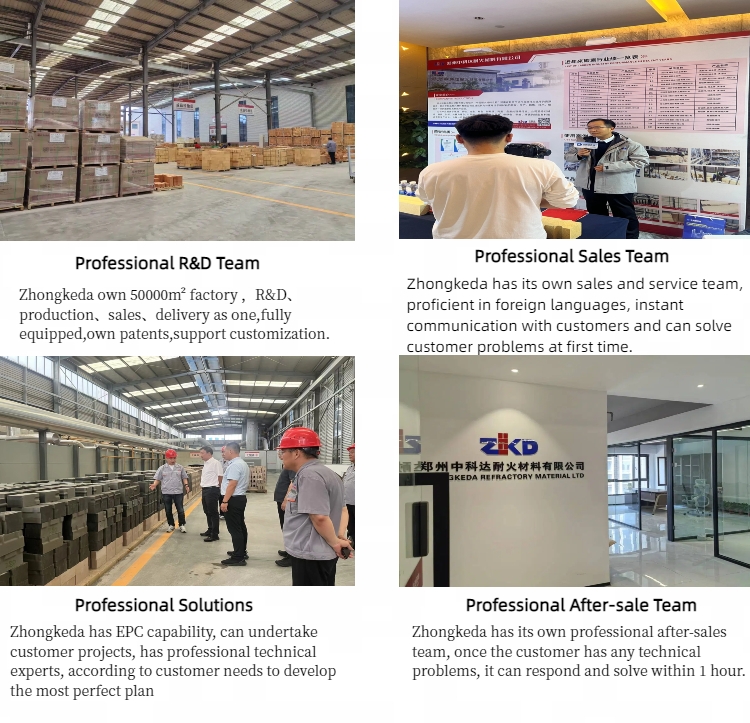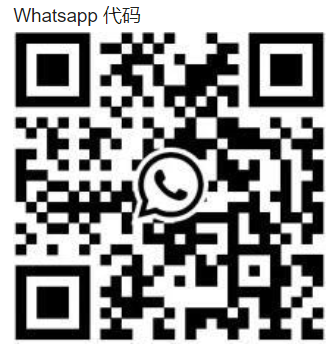Ceramic Fiber
Ceramic Fiber Products | High-Temperature Industrial Insulation Solutions
Heat resistant up to 1600°C · 40% energy savings · OEM/ODM customization available upon request.
Ceramic fiber products are a type of inorganic, non-metallic, high-temperature resistant material made primarily from alumina (Al₂O₃) and silica (SiO₂). They are produced through high-temperature melting followed by blowing or spinning processes to form fibers. The fibrous structure endows these materials with unique properties, making them widely used in high-temperature insulation, fire protection, and energy-saving applications.
Basic Composition and Production Process of Ceramic Fiber Products
Composition:
• Base Formula: Al₂O₃ (40–60%) + SiO₂ (40–60%), with optional addition of zirconia (ZrO₂) to enhance temperature resistance.
• High-Purity Variant: Al₂O₃ content >72% (e.g., zirconia-containing ceramic fiber), capable of withstanding temperatures above 1600°C.
Production Process:
• Melt-Blown Method: Raw materials are melted at high temperature and then blown into fibers (diameter 3–5μm) using high-speed airflow.
• Spun Fiber Method: Fibers are formed via centrifugal spinning, producing longer and more uniform fibers with higher tensile strength.
• Secondary Processing: The fibers are further processed through needling, layering, or vacuum forming into various shapes such as blankets, modules, and papers.
Types of Ceramic Fiber Products
|
Product Type |
Product Type |
Key Performance Parameters
|
Core Advantages
|
|
Ceramic Fiber Bulk |
Loose fibers, formed by blowing or spinning |
Fiber diameter 3–5μm, service temperature ≤1260°C |
Low cost, ideal for filling complex gaps and composite substrates |
|
Ceramic Fiber Blanket |
Needled felt, available in standard/pure/zirconia grades |
Density 96–128 kg/m³, thermal conductivity 0.12 W/(m·K) |
High tensile strength, main insulation material for industrial kilns |
|
Ceramic Fiber Modules |
Pre-compressed folded blankets + anchor system |
Shrinkage ≤3% (at 1600°C), excellent thermal shock resistance |
Fast installation, reduces heat loss by 30%–50% |
|
Ceramic Fiber Paper |
Wet-formed, ultra-thin flexible sheets |
Thickness 0.5–6 mm, temperature resistance up to 1000°C |
Precision insulation, dust-free, ideal for electronics/battery applications |
|
Ceramic Fiber Cloth/Rope |
Fiber woven with reinforcing metal wire |
Tensile strength ≥200 N/cm², temperature resistance up to 1200°C |
High-temperature sealing, valve wrapping, flexible and easy to install |
|
Ceramic Fiber Shaped Parts |
Vacuum-formed or CNC-cut to specification |
Custom shapes like flanges, cones, cylinders |
Over 99% fit rate, specialized lining for custom equipment |
|
Ceramic Fiber Composite Board |
Fiber + aerogel/calcium silicate composite |
Compressive strength ≥1 MPa, fire rating A1 |
Fire protection for buildings, thermal insulation for new energy battery packs |

Features of Ceramic Fiber Products
Property Technical Parameters
High Temperature Resistance Continuous use temperature: 850–1600°C
Low Thermal Conductivity 0.03–0.12 W/(m·K) (at 600°C)
Lightweight Density: 64–256 kg/m³
Thermal Shock Resistance Withstands rapid heating to 1000°C without cracking
Chemical Stability Resistant to acid and alkali corrosion (except HF and strong alkalis)
Environmental & Safety Compliance Asbestos-free, non-carcinogenic, RoHS/REACH compliant
Applications of Ceramic Fiber Products
•High-Temperature Industries: Lining for metallurgical furnaces, thermal insulation for petrochemical pipelines, sealing for power plant boilers.
•New Energy: Fireproof layers for lithium batteries, thermal insulation for hydrogen storage tanks.
•Transportation: Heat shields for automotive exhaust systems, thermal protection for aerospace vehicles.
•Civil Use: Fire-resistant cores for building fire doors, insulation layers in household ovens.


Why Choose Zhongkeda Ceramic Fiber?
•10+ years of refractory manufacturing experience
•Exporting to USA, Russia, Iran, Vietnam, and more
•Strong R&D partnerships (Sinosteel Luoyang, Shanxi Meihai Design Institute)
•OEM/ODM services tailored to your application needs
•Full compliance with international standards (RoHS, REACH, ISO)

Q: What temperatures can ceramic fiber withstand?
A: Standard grades: ≤1260°C continuous use; Zirconia-enhanced grades: up to 1600°C. Download our Temperature Resistance Chart for detailed specs.
Q: How does ceramic fiber improve industrial furnace efficiency?
A: Compared to traditional bricks, ceramic fiber modules:
✅ Reduce heat loss by 40% (verified by thermal imaging)
✅ Cut furnace downtime by 50% due to rapid installation
✅ Extend furnace lifespan 2-3x with superior thermal shock resistance
Q:Do you offer custom sizes and shapes?
A: Absolutely! We provide CNC cutting and vacuum molding services for complex geometries (e.g., flanges, cones). Submit your CAD drawings for a 24-hour quote.
Q: Is ceramic fiber safe for oven insulation?
A: Absolutely! Our FDA-compliant ceramic fiber blankets:
✅ Zero asbestos & carcinogens (SGS Test Report).
✅ Withstand up to 1260°C without releasing harmful fumes.
✅ Reduce outer surface temperature by 50°C+ (Safer to touch!).
Q:How to seal gaps around chimney pipes safely?
A: Use ceramic fiber rope + high-temperature sealant:
• Withstands 1200°C, flexible for irregular gaps.
• No toxic smoke even if charred.
Q: How to make ovens safer and more energy-efficient?
A: Replace traditional glass wool with low-density ceramic fiber blankets (64kg/m³):
• Surface temperature reduced by 70°C (safe to touch).
• Energy consumption lowered by 22% (ErP Directive compliant).
Q: How to install ceramic fiber in existing furnaces?
A: 3 proven methods:
Anchor-based modules – No furnace downtime.
Spray coating – For irregular surfaces.
Layered blankets – Budget-friendly retrofit.
Q: Do you provide installation guidance?
A: We offer:
• Video tutorials for DIY projects
• On-site engineer support for large orders
• Lifetime technical consultation
 Zhengzhou Zhongkeda Refractory Materials Co., Ltd
Zhengzhou Zhongkeda Refractory Materials Co., Ltd

